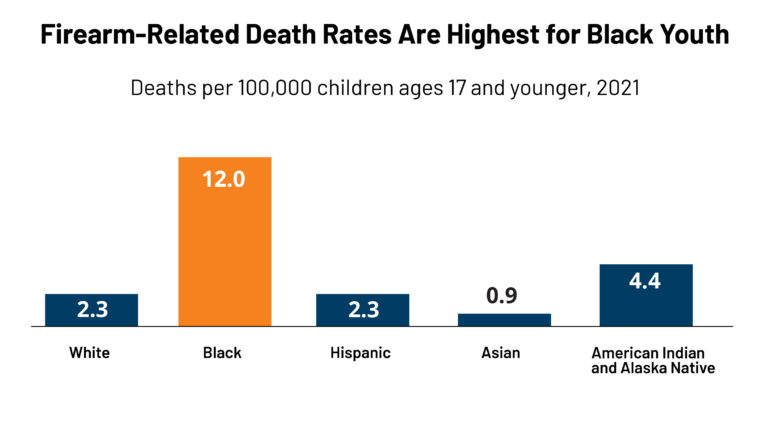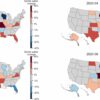Gun violence—and racial disparities in gun violence—have increased substantially during the pandemic, particularly among children. Now a new study led by a Boston University School of Public Health (BUSPH) researcher shows just how stark these differences in risk of firearm injury are between white and non-white children.
Published as a research letter in JAMA Network Open, the study examined gun injuries among children in four major US cities—New York City, Chicago, Los Angeles, and Philadelphia—and found that Black, Hispanic, and Asian children experienced substantial spikes in firearm assault injuries during the first 21 months of the pandemic, while white children did not experience an increase in firearm assault injuries at all.
Pre-COVID, non-white children already experienced a disproportionate burden of gun violence compared to white children. Then during the pandemic, this disparity in risk of being shot nearly quadrupled between Black and white children.
Compared to white children, Black children were 100 times more likely to experience firearm assaults, as of December 2021—up from 27 times more likely before the pandemic. Similarly, the risk of firearm injury tripled between Hispanic children and white children, and nearly tripled between Asian children and white children.
While previous research has documented racial disparities in gun violence among children and across all age groups, the researchers say that the extent of the disparities revealed in these new findings, with no change in firearm injury rates among white children, was quite stark and unexpected.
“This was a striking finding,” says study corresponding author Dr. Jonathan Jay, assistant professor of community health sciences at BUSPH and director of the Research on Innovations for Safety and Equity (RISE) Lab.
“We knew there were large overall increases in firearm injury rates and we hypothesized that the increase was disproportionately concentrated in children of color, but we would have expected some increase among white children and we saw none. I think that speaks to the extent to which white children, on average, are insulated from gun violence exposure by social advantage and neighborhood context.”
Dr. Jay, Dr. Simes, and colleagues examined firearm assault data from 2015 to 2021 among the three most populous US cities, as well as the city with the highest firearm assault rate among a population of one million or more (Philadelphia).
During this time period, there were 2,672 reported shootings of children in these cities, representing a twofold increase in child firearm assaults associated with the pandemic. Black children experienced the highest rates in firearm injuries overall, while white children experienced the lowest rates. Among the four cities, New York City reported the highest number of child firearm injuries.
As gun violence remains the leading cause of death among children and teens in the US, the researchers say these findings emphasize the need for cities to invest in policies and programs that promote gun violence prevention and reduce structural inequities by employing trusted figures within communities to facilitate social and safety services.
“Racism and poverty are at the heart of both violence and its punitive policy response in the US,” says study senior author Dr. Jessica Simes, assistant professor of sociology at Boston University College of Arts & Sciences. “The profound disparities in gun victimization among children that we report in this paper demand comprehensive, anti-poverty policy reforms that center racial justice and the communities most harmed by gun violence.”
“Community violence interventions can stop violence from escalating and break cycles of violence,” Dr. Jay says. “In the long term, we also need to address more root causes, such as segregation and economic disparities and the ways these issues play out in neighborhood environments.” For example, a previous study he led indicated that increasing tree canopy in underinvested neighborhoods may help reduce gun violence rates and disparities in gun violence.
“We’ll never eliminate racial disparities in gun victimization until we alleviate these deeply rooted inequities,” Dr. Jay says.
More information:
Analyzing Child Firearm Assault Injuries by Race and Ethnicity During the COVID-19 Pandemic in 4 Major US Cities, JAMA Network Open (2023). DOI: 10.1001/jamanetworkopen.2023.3125
Citation:
During pandemic, Black children were 100 times more likely than white children to experience gun injuries (2023, March 8)



